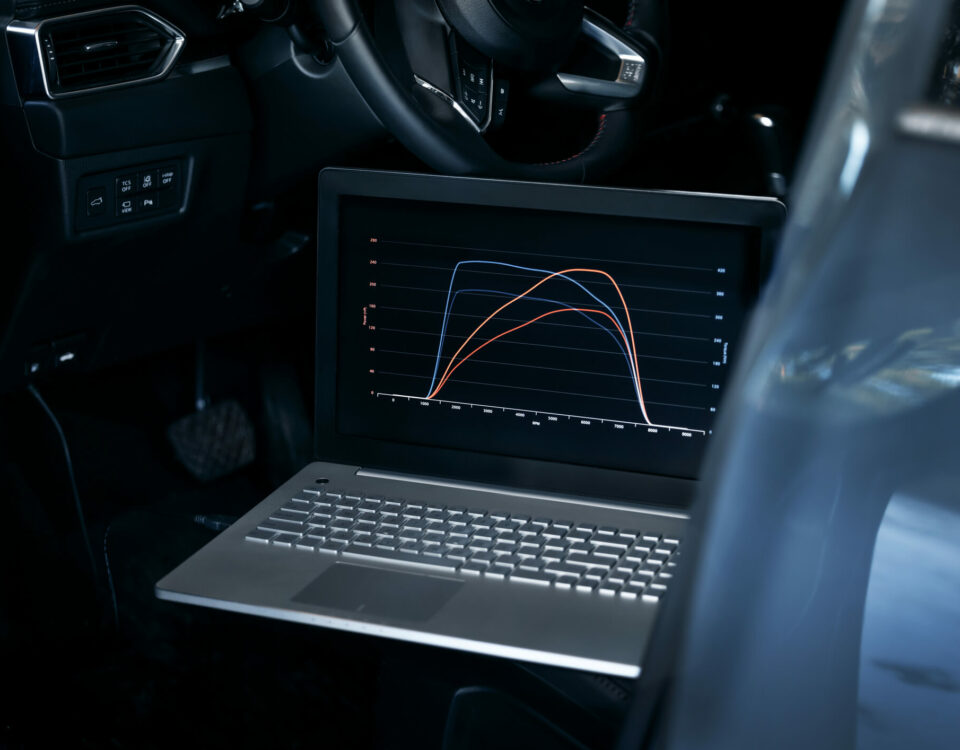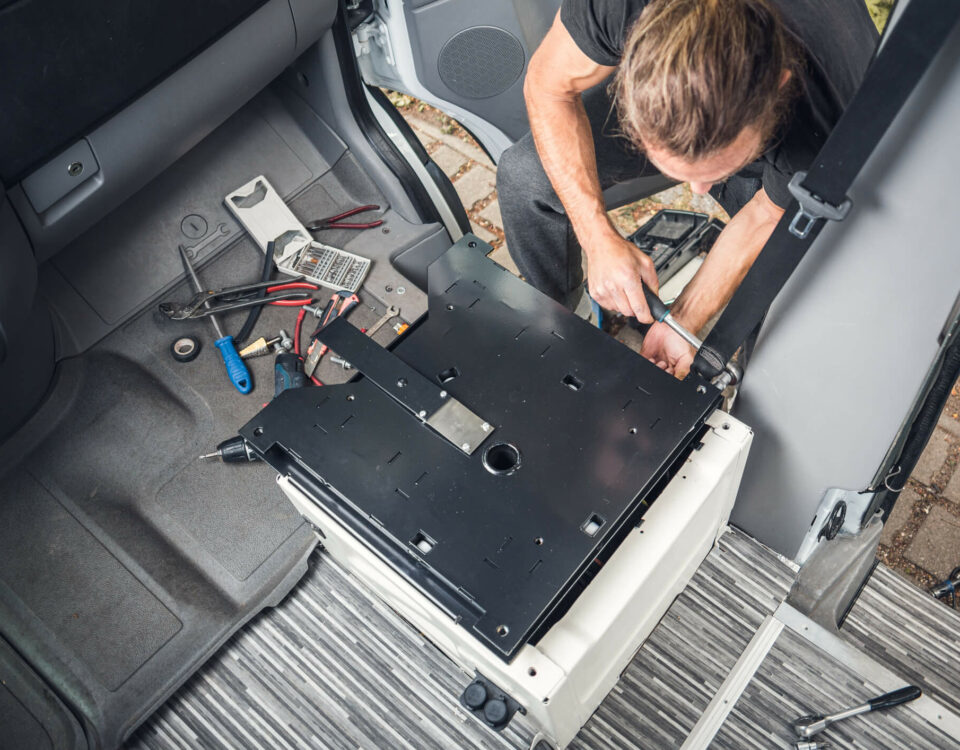Pros and cons of ECU remapping
This blog post will examine the pros and cons of ECU remapping. Ecu remapping is the process of reprogramming a vehicle’s engine control unit to alter performance. The benefits include increased horsepower, torque, and fuel efficiency, however, there are also potential downsides like increased wear and tear on the engine and transmission and issues with emissions. This blog will help you to make an informed decision about whether ECU remapping is right for your vehicle.
A Complete Guide for Engine Control unit Remapping
Engine remapping, like the Audi ECU Remap, is regarded as a comparatively inexpensive method of customizing your vehicle. Although most remaps concentrate on boosting your car’s power and performance, they can also boost your engine’s fuel economy.
ECU Remapping: What Is It?
An Engine Control Unit (ECU) is a type of electronic control unit that controls aspects of an internal combustion engine. A computerised device that receives input from sensors on the engine and vehicle and uses that information to make changes to the engine’s performance. It Has control over the engine’s air to fuel ratio, ignition timing, valve timing, parameters to optimise power, efficiency, and emissions.
The Electronic Control Unit uses data from sensors such as the mass airflow sensor, oxygen sensor, and engine speed sensor to check the engine’s operating conditions. The super intelligent control unit also calculates the optimal fuel injection, based on the available data. Analysing ignition timings, and other settings to provide the best performance. This helps maximise fuel efficiency, whilst also reducing emissions.
An Electronic control unit is typically located in the engine compartment and is connected to the engine through a network of wires. It will also communicate with other modules in the vehicle, such as the transmission control module and body control module, to ensure the engine and other systems are working in cohesion.
Modern Electronic control units are technologically advanced enough to control many functions such as, engine performance, diagnosing faults, and adjusting the engine’s power output to suit the driver’s preferences. Some high end vehicles come with more than one ECU to control different aspects of the engine such as emissions, fuel injection, and ignition.
Why Remap an ECU, You Ask?
There are several reasons why someone might choose to remap the engine control unit (ECU) on their vehicle. With ECU remapping, drivers can personalize their vehicle to meet their specific needs and preferences, such as improving acceleration or optimizing fuel consumption. Some of the most common reasons include:
- Increased power: ECU Remapping can increase the engine’s power output, resulting in improved acceleration and overall performance.
- Improved fuel efficiency: By optimizing the engine’s performance, remapping the ECU can lead to improved fuel efficiency, which can save money on fuel costs over time.
- Better drivability: the ECU can improve the vehicle’s drivability by adjusting the engine’s torque and power delivery to suit the driver’s preferences.
- Customization: The remapping process can be tailored to the specific vehicle, driver, and usage.
- Legalization: In some cases, remapping the ECU can be used to make a vehicle compliant with emissions regulations.
Remapping the engine can void the vehicle’s warranty and may not be legal in some areas. It’s always a good idea to check a professional mechanic before proceeding with a remap.
What is the process of engine mapping?
The process of engine remapping typically involves the following steps:
- Connecting to the vehicle: The first step is to connect specialized software and equipment to the vehicle’s engine control unit (ECU). This is typically done by plugging a device into the vehicle’s diagnostic port.
- Reading the original map: The software will then read the original map stored on the ECU, which contains information about the engine’s performance and settings.
- Creating a new map: Once the original map has been read, a new map can be created using specialised software. This new map can be customised to optimise the engine’s performance for a specific set of parameters.
- Uploading the new map: Once the new map has been created, it is uploaded to the ECU.
- Testing the vehicle: After the new map has been uploaded, the vehicle is taken for a test drive to ensure that the engine is performing properly.
- Fine tuning: If necessary, the new map can be fine-tuned to optimise the engine’s performance.
How to perform an ECU Remap
An ECU (Engine Control Unit) remap is a process of reprogramming a vehicle’s engine management system to alter the engine’s performance characteristics. This is typically done by connecting specialized software to the vehicle’s OBD-II (On-Board Diagnostics) port and uploading new, custom software to the ECU. There are different ways to perform ECU remap. Some are:
OBD Tuning: This method is done via the OBD-II port and is a quick and easy way to remap a vehicle’s ECU.
BDM Tuning: This method requires the removal of the ECU from the vehicle and the use of specialized equipment to read and write data to the unit’s memory.
Bench Tuning: This method involves physically opening the ECU and connecting it to a programming device.
Jtag / BSL (Boot pin) tuning: This method is used for newer vehicles and requires connecting directly to the ECU’s internal programming pins.
It’s important to note that ECU remap is a complex process, and should be done by a professional tuner with the appropriate knowledge, skills, and equipment. Improperly remapping an ECU can cause damage to the engine or other vehicle systems, and may also void the vehicle’s warranty. Contact us to find out more about remapping your vehicle.
Chip tuning: What Is It?
Chip tuning, also known as ECU (Engine Control Unit) tuning, is the process of reprogramming a vehicle’s engine management system to alter the engine’s performance characteristics. This is done by replacing the vehicle’s factory installed ECU chip with a custom chip that has been programmed with new software.
The new software also called a map or tune is designed to optimise the engine’s performance by adjusting various parameters such as fuel injection, ignition timing, and turbo boost pressure. This can result in increased horsepower and torque, as well as improved fuel efficiency. Chip tuning can also help to remove factory installed restrictions that are put in place by the vehicle’s manufacturer to meet emissions regulations.
Chip tuning is usually performed by professional tuners who have the appropriate knowledge, skills, and equipment to safely and effectively reprogram a vehicle’s ECU. chip tuning can void the vehicle’s warranty, and if not done correctly, can cause damage to the engine or other vehicle systems.
Can diesel be remapped?
Yes, diesel engines can be remapped by an experienced mechanic or specialist using specialised software and equipment. Diesel vehicles gain a better advantage than petrol when it comes to remapping, due to diesel vehicles having more torque to begin with.
The pros of ECU remapping
The main benefits of ECU remapping include:
- Increased power and torque: Remapping can increase the engine’s power and torque output, allowing the vehicle to accelerate more quickly and have more pulling power.
- Improved fuel efficiency: By optimizing the engine’s performance, remapping can lead to better fuel economy and lower emissions.
- Better driving experience: Remapping can give the driver a more responsive and smoother driving experience by improving the engine’s performance characteristics.
- Better Towing capability: Remapping can also increase the engine’s torque output, which can be beneficial for towing heavy loads.
- Improved throttle response: Remapping can also improve the throttle response, making the vehicle more responsive to driver inputs
- Increased engine lifespan: Properly remapping can lead to less stress on the engine, extending its lifespan.
Cons of remapping
The main drawbacks of ECU remapping include:
- Warranty concerns: Remapping can void the warranty of a vehicle, meaning that any repairs or replacements needed as a result of the remapping will not be covered.
- Emissions concerns: can also affect the emissions levels of a vehicle, potentially making it non-compliant with local regulations.
- Risk of damage: If it is not done properly can cause damage to the engine or other parts of the vehicle. It’s important to use a reputable and experienced professional when considering remapping.
- Decrease in fuel economy: If not done carefully, remapping can cause the engine to consume more fuel than before, leading to a decrease in fuel economy.
- Risk of engine failure: Remapping can push the engine to its limits, which can cause failure if not done properly.
- Legal issues: Some states, countries, and regions have strict laws and regulations regarding engine remapping, and it may not be legal to do so.
It’s important to weigh the potential benefits and drawbacks of remapping before deciding to proceed. Additionally, it’s always a good idea to consult with the professional and check with local laws and regulations before proceeding with a remap.
What Role Does ECU Remapping Have in the Future?
ECU remapping is likely to play a role in the future of the automotive industry, particularly as vehicles become more advanced and technology continues to evolve. Some potential ways that ECU remapping could be used in the future include:
- Increasing the efficiency of electric and hybrid vehicles: By optimising the performance of the electric motor and battery management system, remapping could help to improve the range and efficiency of these types of vehicles.
- Improving the performance of autonomous vehicles: could be used to optimise the performance of the sensors and control systems used in autonomous vehicles, helping to improve their safety and reliability.
- Optimising the performance of alternative fuel vehicles: could be used to optimise the performance of vehicles powered by alternative fuels such as hydrogen or biofuels.
- Remote updates: with the increasing use of connected cars, ECU remapping could be done remotely, through the internet, allowing for easy updates and modifications.
- Customisable driving experience: With the increasing use of advanced driver assistance systems, remapping could be used to create a more personalised driving experience, tailored to individual preferences.
In conclusion, ECU remapping offers several benefits, such as increased horsepower and fuel efficiency, but it’s important to weigh the potential downsides, such as increased wear and tear on the engine and potential issues with emissions. Consider your driving needs, budget, and vehicle before deciding on an ECU remap. If you need more information or are interested in having your vehicle’s ECU remapped, please contact https://dkuperformance.co.uk for more information.



